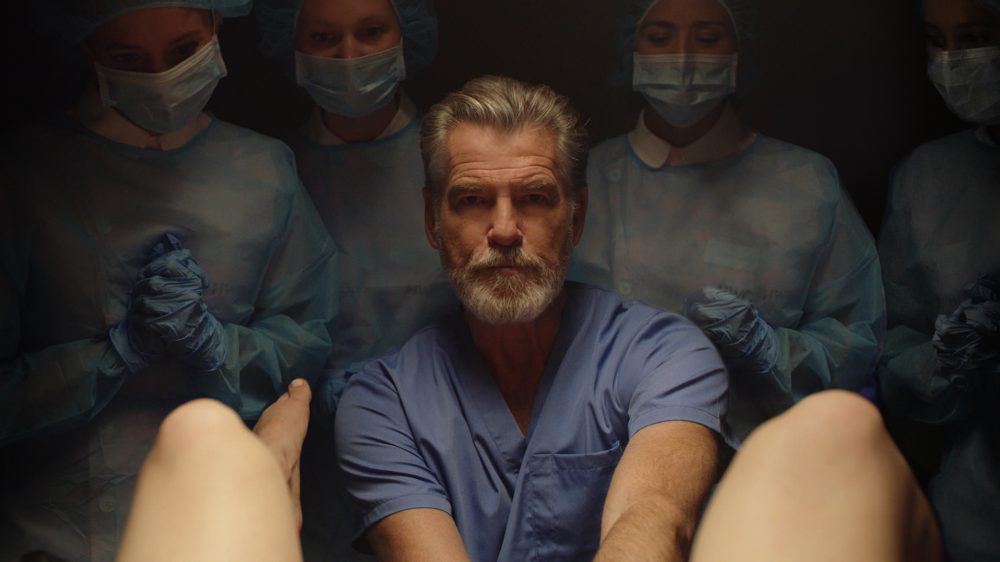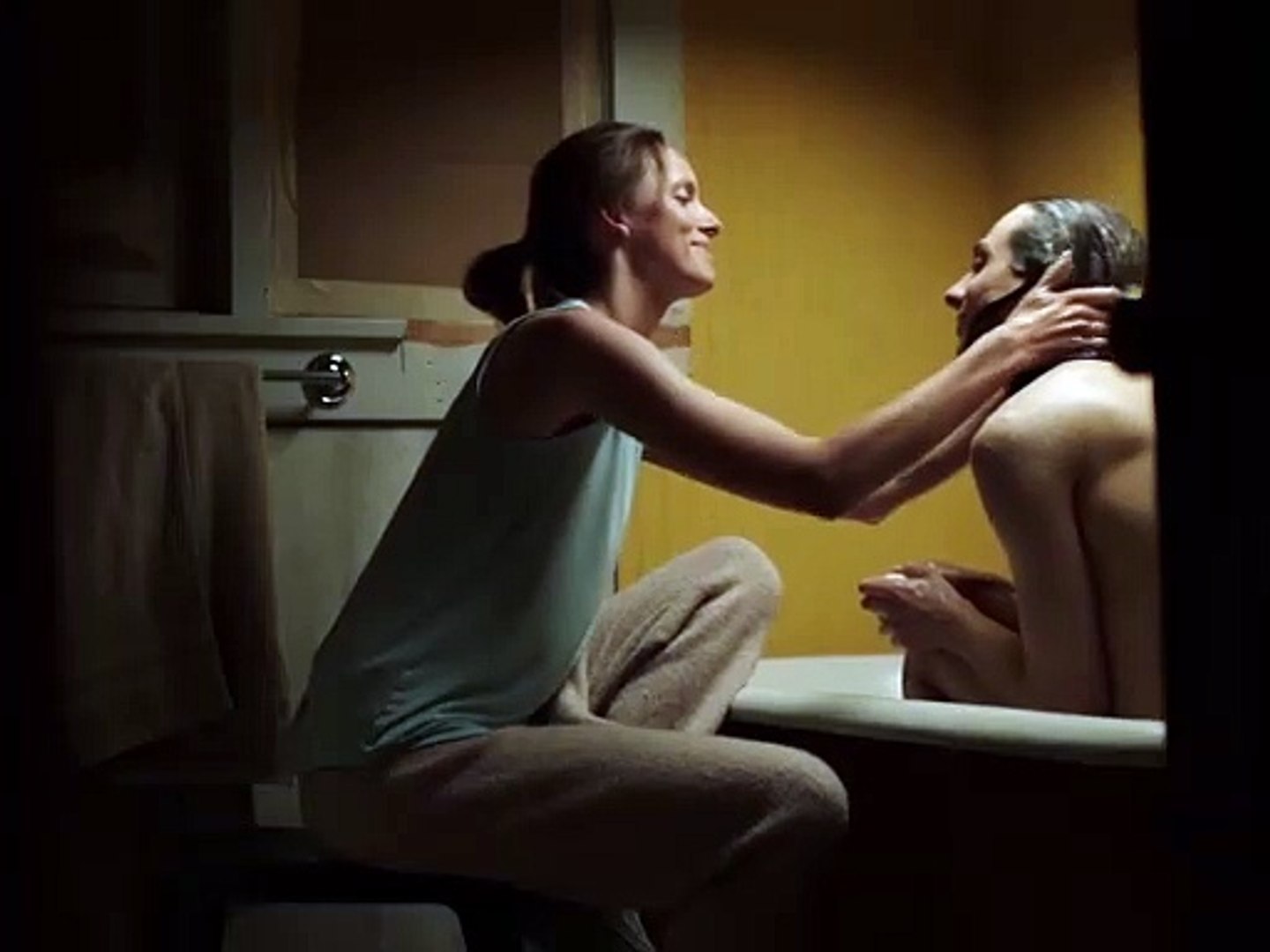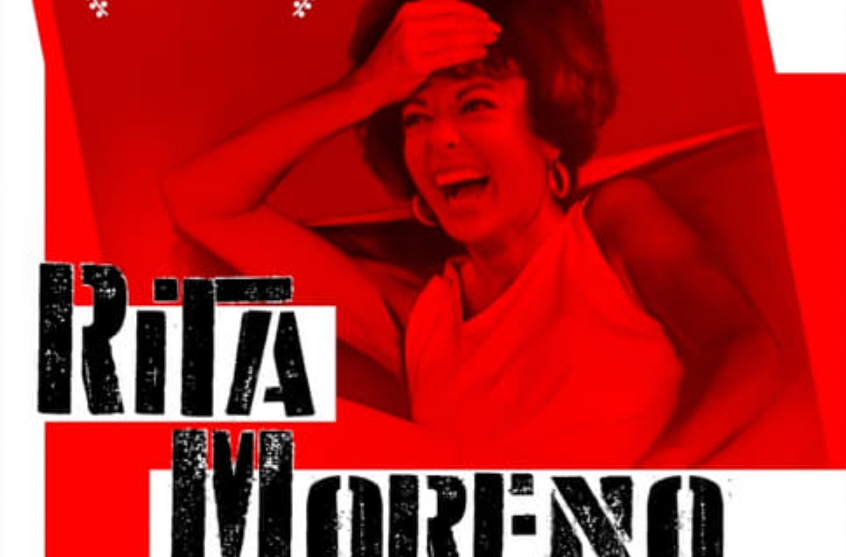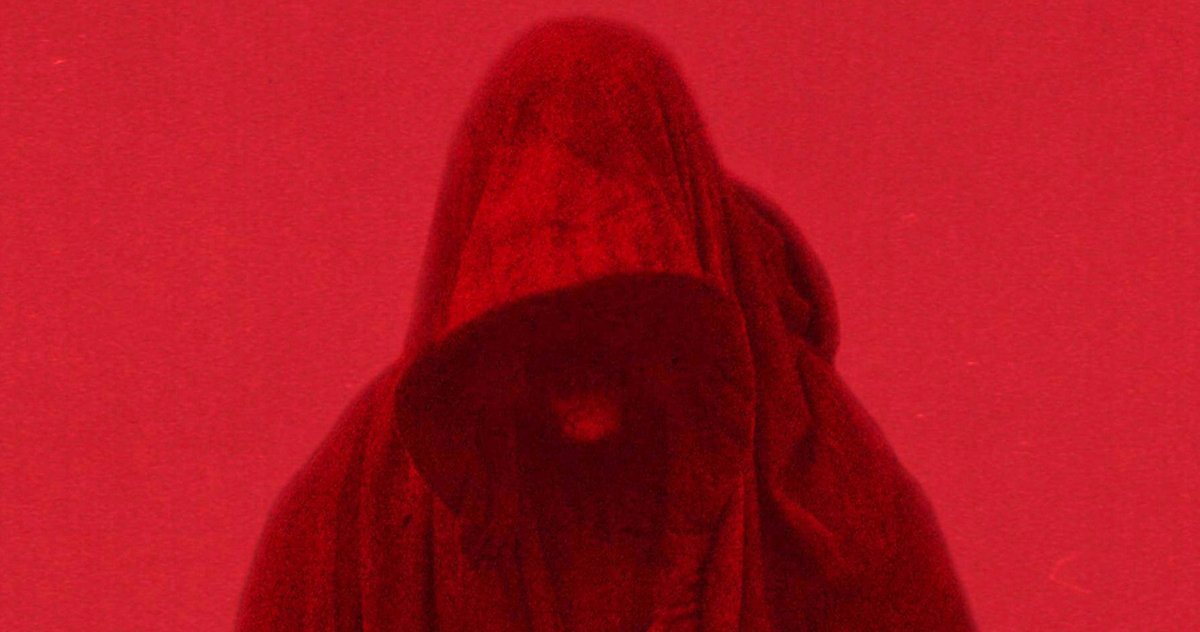False Positive
by Hope Madden
You’ll find real horror in False Positive. There’s the plot, sure—a woman desperate to conceive, in the hands of a nefarious physician with a God complex—and all the body horror and helplessness that go along with it. But that’s not the scary part.
Indeed, co-writer/director John Lee levels a more comedic tone to the by-the-numbers premise. Where he and co-writer/star Ilana Glazer mine unnerving dread is in their observational honesty.
Glazer is Lucy, and she and her husband Adrian (Justin Theroux, slyly wonderful) have been trying to get pregnant for two years. As much as she wants to do this naturally, she finally caves in to Adrian’s suggestion that they visit his med school mentor, Dr. Hindle (Pierce Brosnan – perfection).
Lee’s intention is not to make you wonder whether something sinister is afoot. The Stepford-esque nursing staff and eerily meticulous clinic proclaim it. The sheer number and variety of phallic instruments to be inserted, and the volume of lubricant so very lovingly applied, plays like SNL by way of Cronenberg.
If you’ve ever seen Broad City, Glazer’s groundbreaking Comedy Central sit-com, you may not recognize the performer’s dramatic skills, but you will recognize the writer’s keen eye for everyday absurdities.
Here’s where False Positive’s horror kicks in. It’s the authenticity, the banal realism of Lucy’s daily condescending, dismissive, patronizing, smothering, gaslighting humiliations that really eat at you. The low-key accuracy of it all—from the male colleagues who swear you are glowing as they leave their lunch orders next to your laptop, to your nurse’s reassuring caresses and terms of endearment, to your husband’s reminder whenever you’re feeling down that we’ve been through a lot with this pregnancy.
Tensions escalate as the storyline itself dictates, although the film is far more surefooted in its observational horror than it is in its plot. Lucy’s pre-pregnancy character is ill-defined, which makes her descent less satisfying. The climax is played for comedic value and the final act’s weirdness, though welcome, holds no real meaning.
Worse of all is the under-developed character of a midwife played imposingly by Zainab Jah. Lee clearly hoped to use this character as a statement on the genre itself but the whole affair feels wrong-headed.
Those are some serious misgivings, I grant you, but there really is something subversive, honest, and horrifying worth witnessing in this movie.














